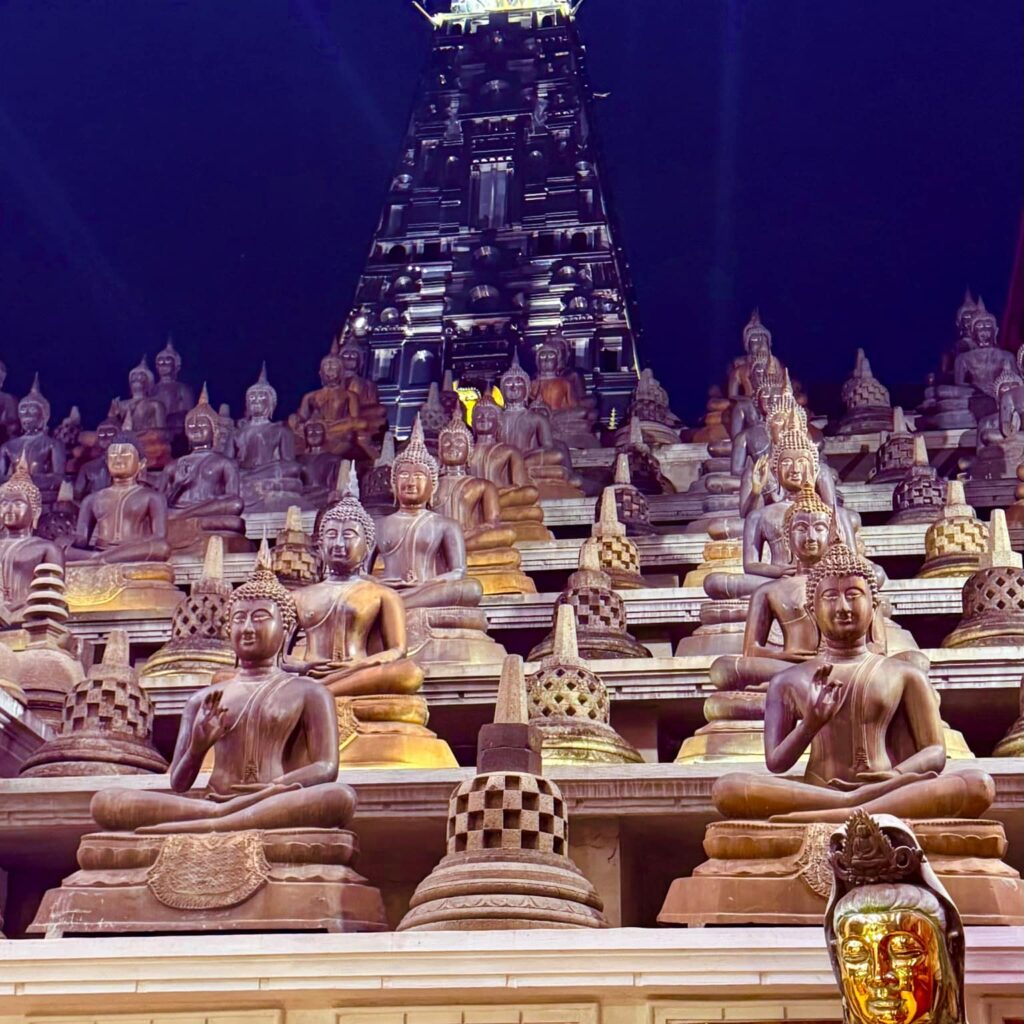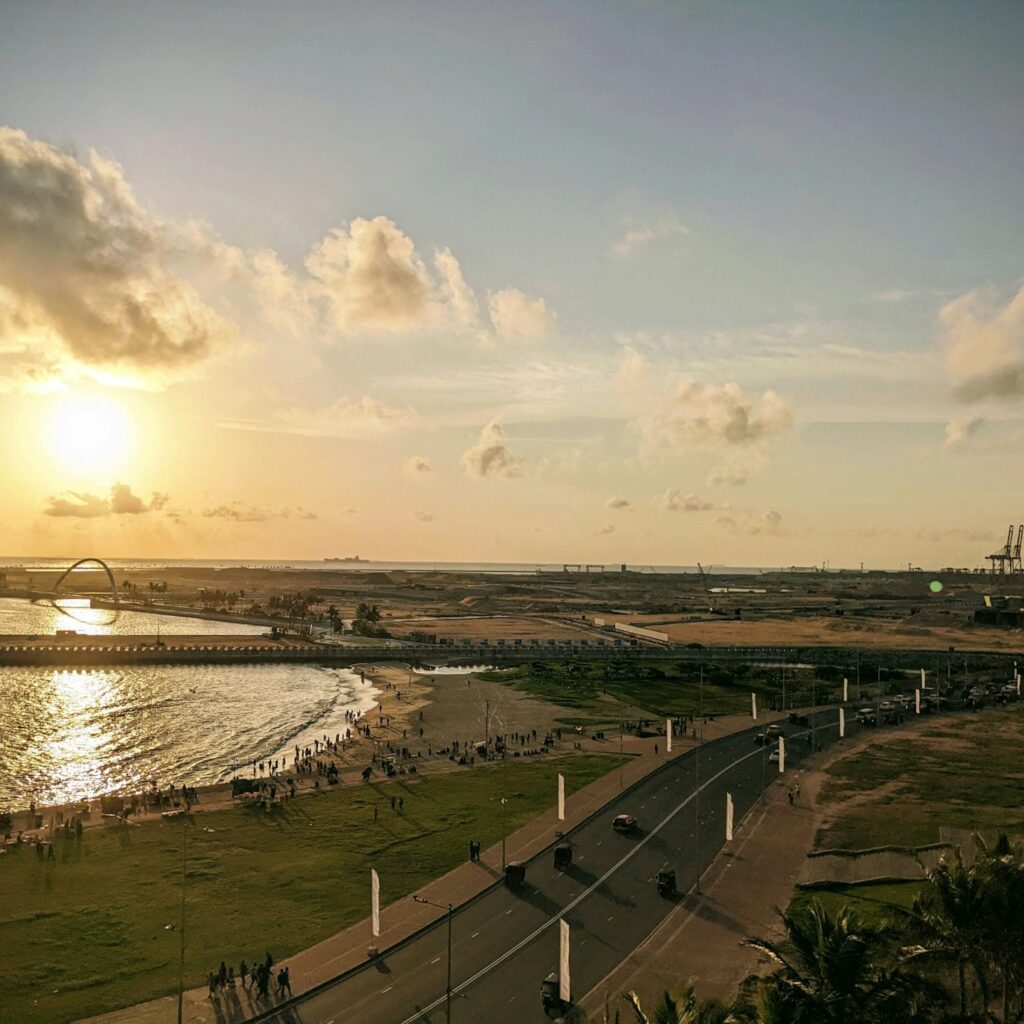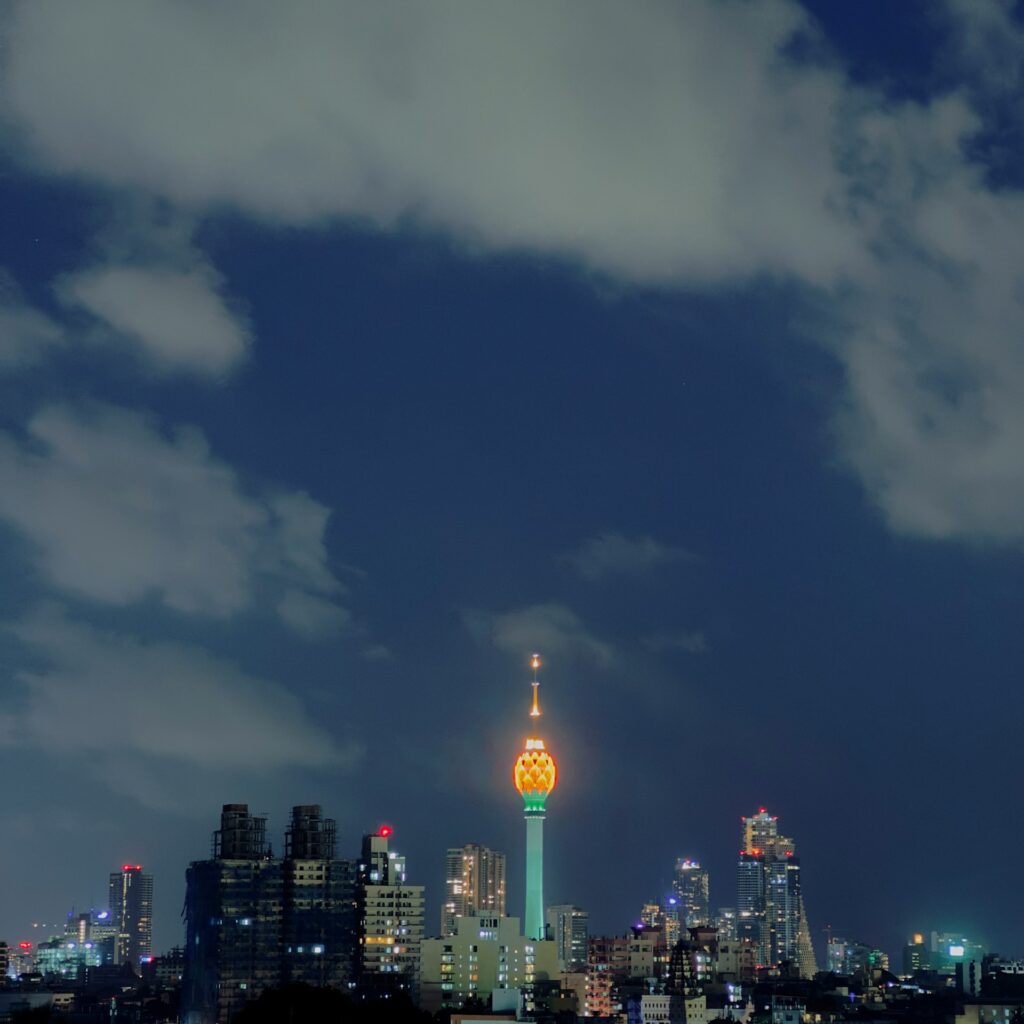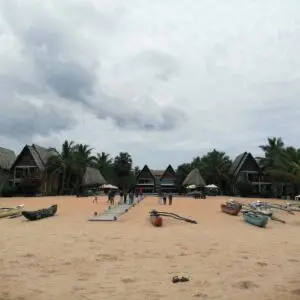Colombo, the bustling capital of Sri Lanka, has been a significant trading port for over 2,000 years, attracting merchants from Asia, the Middle East, and Europe. It first gained prominence during the Portuguese era in the early 16th century, followed by Dutch and British colonial rule. This multicultural influence is evident in its architecture, cuisine, and culture. Today, Colombo is a vibrant metropolis blending historical landmarks with modern skyscrapers.
Top Places to Visit in Colombo
1. Gangaramaya Temple
Gangaramaya Temple is one of Colombo’s most iconic religious landmarks, blending traditional architecture with modern design. Established in the late 19th century by Venerable Hikkaduwe Sri Sumangala Nayaka Thera, this Buddhist temple serves as a place of worship, a cultural center, and an educational institution.

Highlights:
- Eclectic Architecture: The temple showcases a blend of Sri Lankan, Thai, Indian, and Chinese architectural styles, making it visually unique.
- Museum and Relics: Inside the temple complex, there is a fascinating museum housing an extensive collection of Buddhist relics, vintage artifacts, jewelry, and even antique cars.
- Seema Malaka: Located on Beira Lake, this meditation hall is part of the temple complex, designed by renowned architect Geoffrey Bawa. Its tranquil setting offers a peaceful escape from the bustling city.
- Cultural and Religious Activities: Gangaramaya plays a significant role during Vesak celebrations, featuring colorful lantern displays and cultural performances.
2. Galle Face Green
Galle Face Green is a vibrant oceanfront promenade stretching over half a kilometer along the coast of Colombo. Initially laid out by the Dutch to line up cannons and later expanded by the British for horse racing and recreational activities, it is now a popular public park.

Highlights:
- Scenic Views and Sunsets: With its open space and unobstructed views of the Indian Ocean, Galle Face Green is the best spot in Colombo to witness mesmerizing sunsets.
- Street Food Paradise: The promenade is lined with vendors selling local street food delicacies, including isso wade (prawn fritters), kottu roti, and fresh coconuts.
- Leisure and Recreation: It’s a popular spot for kite flying, evening strolls, jogging, and picnics. Families, couples, and friends gather here to enjoy the cool sea breeze.
- Colonial Landmarks: The historic Galle Face Hotel, one of the oldest hotels in Asia, is located adjacent to the green, offering colonial charm and luxury.
3. National Museum of Colombo
The National Museum of Colombo, established in 1877 by Sir William Henry Gregory, is the largest and oldest museum in Sri Lanka. Housed in a grand colonial-style building, it provides a comprehensive overview of the island’s rich history and cultural heritage.
Highlights:
- Historical Artifacts: The museum’s extensive collection includes ancient weapons, traditional costumes, religious artifacts, and royal regalia, including the throne and crown of the Kandyan kings.
- Buddhist Sculptures and Art: It features an impressive array of Buddhist statues and religious carvings dating back to the Anuradhapura and Polonnaruwa periods.
- Ethnographic Exhibits: Discover the cultural diversity of Sri Lanka through exhibits on traditional crafts, folklore, and daily life of various ethnic communities.
- Colonial Architecture: The museum itself is a masterpiece of Italian-style architecture, with beautiful gardens surrounding the main building.
4. Pettah Market
Pettah Market, also known as the Manning Market, is Colombo’s busiest and most vibrant marketplace. Located near the Colombo Fort Railway Station, this bustling bazaar is a labyrinth of narrow streets teeming with shops and vendors selling an array of goods.
Highlights:
- Vibrant Atmosphere: Experience the lively atmosphere with vendors shouting out prices and locals bargaining for the best deals.
- Variety of Products: The market is divided into sections selling fresh produce, spices, textiles, electronics, jewelry, and souvenirs.
- Colonial Architecture: Amidst the chaos, you can spot colonial-era buildings, reflecting Pettah’s historical significance as a trading hub.
- Cultural Diversity: Pettah is a melting pot of cultures with mosques, temples, and churches nestled within the market area, showcasing Colombo’s multicultural identity.
5. Independence Square
Independence Square, located in the prestigious Cinnamon Gardens area of Colombo, is a national monument commemorating Sri Lanka’s independence from British colonial rule on February 4, 1948.
Highlights:
- Independence Memorial Hall: Designed in the style of Kandyan architecture, this hall was built to mark the country’s freedom and is used for national ceremonies and events.
- Statue of D.S. Senanayake: A statue of Sri Lanka’s first Prime Minister, D.S. Senanayake, stands prominently in front of the memorial.
- Beautiful Surroundings: The area is surrounded by lush gardens, walking paths, and well-maintained lawns, making it a popular spot for jogging and evening strolls.
- Cultural Significance: The site symbolizes the end of colonialism and the beginning of self-governance, reflecting the pride and identity of the Sri Lankan nation.
6. Lotus Tower

Lotus Tower, standing at 350 meters, is the tallest structure in South Asia and an iconic landmark in Colombo. Shaped like a lotus bud, it symbolizes the country’s flourishing economy and cultural heritage.
Highlights:
- Panoramic Views: The observation deck provides breathtaking 360-degree views of Colombo city, Beira Lake, and the Indian Ocean.
- Entertainment Complex: The tower features a shopping mall, restaurants, conference halls, and entertainment facilities.
- Architectural Marvel: The lotus-inspired design represents purity in Sri Lankan culture, while its vibrant colors add a modern touch to Colombo’s skyline.
- Telecommunication Hub: Apart from being a tourist attraction, the tower also serves as a transmission hub for television and radio broadcasting.


